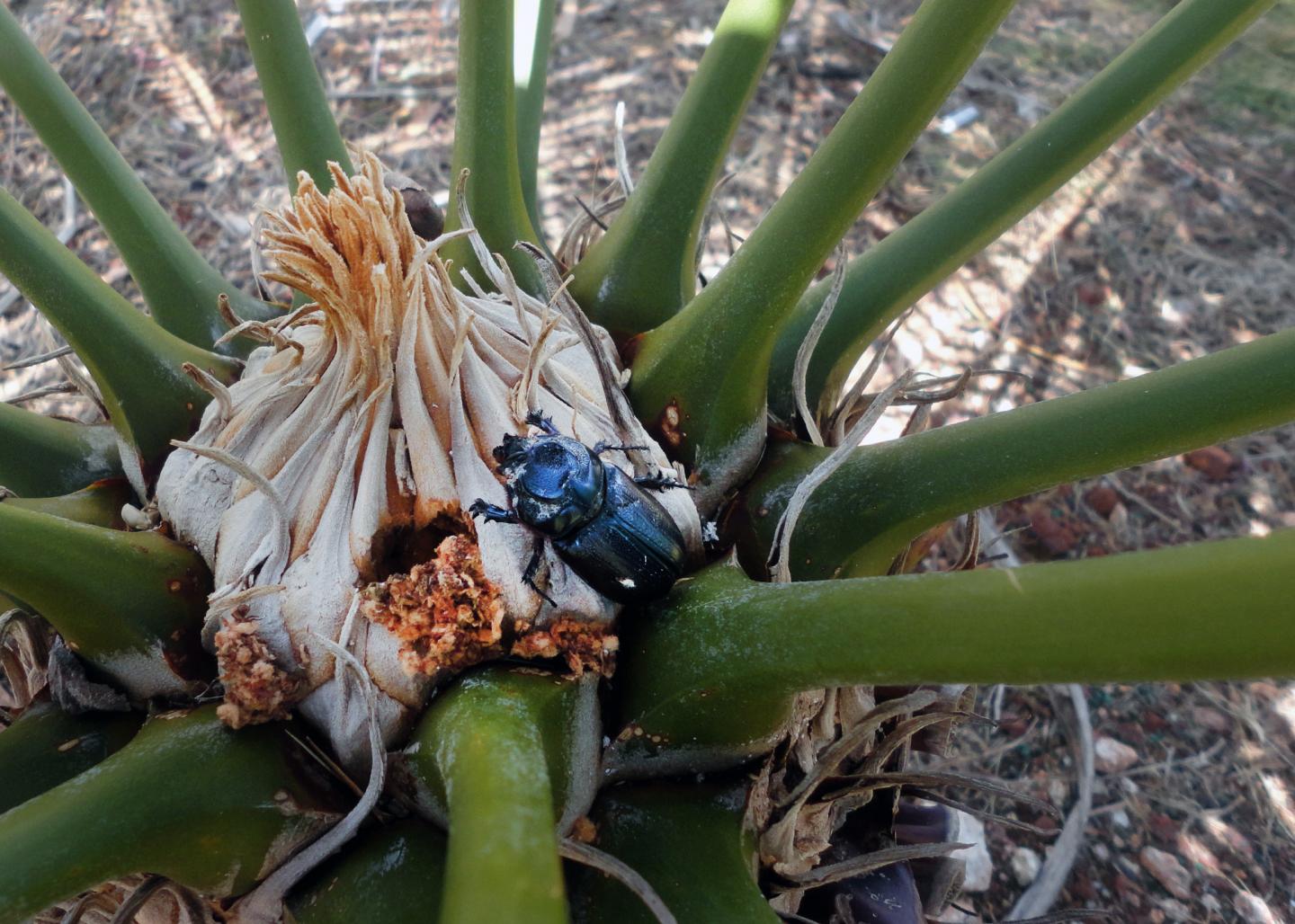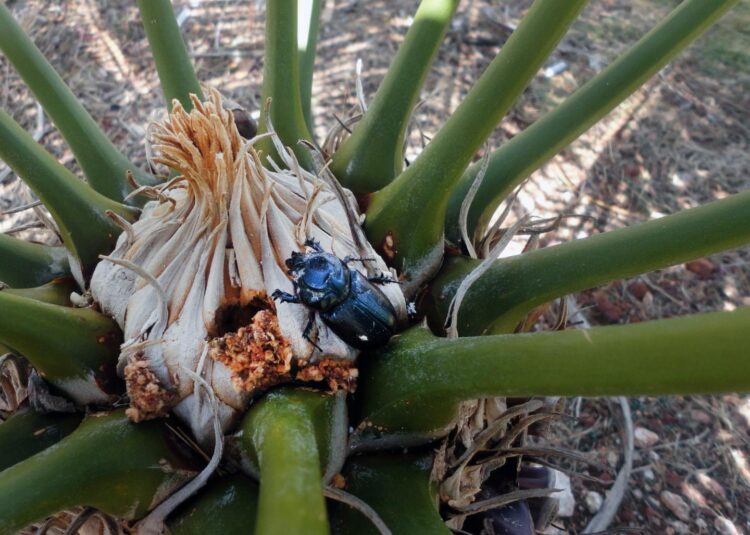Invasive beetle could lead to local extinction of the region’s only native gymnosperm

Credit: University of Guam Western Pacific Tropical Research Center
Researchers at the Western Pacific Tropical Research Center at the University of Guam have documented what biologists call a “host shift” of the coconut rhinoceros beetle in Guam. The beetle, first documented as an invasive species in Guam in 2007, has been devastating the island’s ubiquitous coconut trees and is now also burrowing into Guam’s endangered native cycad tree, Cycas micronesica. The results were published in June in Volume 13 of the Communicative & Integrative Biology journal.
The fact that coconut trees were the second most abundant tree on the island prior to the beetle’s invasion was one factor that enabled the beetle’s explosive population growth. The sustained efforts to develop an effective biological control program have not been effective, allowing the pest to establish a foothold throughout the island.
“Our initial alarm after documenting the CRB burrowing activity on cycad trees was the fact that Guam’s cycad species was actually the most abundant tree on the island only 20 years ago,” said Irene Terry, one of the authors of the study. “Where else have the most abundant and second most abundant forest species been threatened by the recent invasion of one non-native herbivore?”
The authors used direct measurements of starch concentrations of the plant tissues to show that the island’s heavily damaged coconut trees have declined in starch content so greatly that the host shift may have occurred in order to exploit the large doses of starch that are available in the cycad stems.
“The CRB behaviors that we documented fit the ‘ecological fitting theory,’ which states that shifting to a new host species is due to compatible resources or signals in the new host,” said Terry, who has been studying the relationships among insect herbivores and the native cycad plant since 2005. This kind of host shift is opportunistic and may occur without any co-evolution processes.
Prior to the beetle’s host shift, the cycad population on Guam was already suffering from chronic damage by numerous non-native insect and mammal herbivores, resulting in 96% mortality of the cycad population in the past 15 years. The WPTRC cycad team’s sustained research has revealed that the severity of damage by each herbivore species has exhibited an undulating pattern, with the most severe damage at any point in time changing from species to species.
“When the CRB damage in our managed gardens began showing up on several cycad species, we knew that it was only a matter of time before the CRB host shifts included Guam’s native cycad,” said Benjamin Deloso, who curates the University of Guam’s interpretive cycad garden.
The beetle’s burrowing activity in managed gardens at the University of Guam also includes highly diverse cycad species that originate from Asia, Australia, Central America, and the Caribbean regions.
“The damaged species included two families and four genera, so the dietary needs of the coconut rhinoceros beetle appear to be met at the cycad Order level,” Deloso said.
The unexpected addition of the coconut rhinoceros beetle to the list of cycad herbivores reveals the need for continued observation of the cycad population by species experts so conservationists can best understand which of the threats are most in need of mitigation.
The authors discussed the absence of international cycad experts from the contemporary conservation projects as a component of why the damage from the beetle was able to become established throughout the island without notice, and the continued absence of international experts from ongoing funded conservation projects will increase the probability of local extinction of the only native gymnosperm species in the region.
###
Media Contact
Olympia Terral
[email protected]
Original Source
https:/
Related Journal Article
http://dx.





